




Have you ever noticed white streaks on your clothes after washing them? It can be frustrating to spend time and effort doing laundry, only to have your favorite clothes ruined by these unsightly marks. In this article, we will explore the causes of white streaks on clothes after washing and discuss possible solutions to prevent them.
One common cause of white streaks is the use of too much detergent. When you use more detergent than needed, it can leave behind a residue on your clothes that doesn’t fully rinse out during the washing process. This residue can appear as white streaks or spots on your clothing, especially if you’re using a detergent that is high in surfactants.
Another possible cause of white streaks is hard water. Hard water contains high levels of minerals like calcium and magnesium. When you wash your clothes in hard water, these minerals can react with the detergent and form soap scum, which can leave white streaks on your clothes. If you live in an area with hard water, using a water softener or adding vinegar to your wash can help prevent this issue.
In addition to detergent residue and hard water, white streaks can also be caused by fabric softener build-up. Fabric softeners contain ingredients that can leave a waxy film on your clothes, especially if you’re using too much or not properly diluting the softener. This build-up can appear as white streaks or patches on your clothing. You may want to consider reducing the amount of fabric softener you use or using alternative methods to soften your clothes, such as using dryer balls or adding a cup of baking soda to your wash.
In conclusion, white streaks on clothes after washing can be caused by a variety of factors, including excessive detergent use, hard water, and fabric softener build-up. By being mindful of these causes and making adjustments to your laundry routine, you can help prevent these frustrating marks and keep your clothes looking fresh and clean.
Understanding White Streaks on Clothes
White streaks on clothes after washing can be a frustrating problem, leaving your garments looking less than pristine. Understanding the causes of these streaks can help you prevent and address them, ensuring your clothes remain clean and stain-free.
Hard Water Deposits
- What are hard water deposits?
- How to address hard water deposits?
Hard water contains high levels of minerals like calcium and magnesium. When hard water is used for washing clothes, these minerals can leave behind deposits that appear as white streaks.
Using a water softener or adding a water softener product to your laundry can help prevent and remove hard water deposits. Additionally, using a higher quality detergent specifically formulated for hard water can also be effective.
Detergent Residue


- What is detergent residue?
- How to address detergent residue?
When detergent is not properly rinsed out during the wash cycle, it can leave behind a residue on clothes that appears as white streaks.
Ensure that you are using the correct amount of detergent for your laundry load size. Avoid overloading the washing machine, as it can prevent proper rinsing. Running an extra rinse cycle or using vinegar as a natural fabric softener can also help remove excess detergent residue.
Mineral Buildup in Washing Machine
- What is mineral buildup in a washing machine?
- How to address mineral buildup in a washing machine?
Over time, minerals from hard water can accumulate in the inner workings of a washing machine, leading to inefficient rinsing and the transfer of these minerals onto clothes during the wash cycle.
Regularly cleaning and descaling your washing machine can help prevent mineral buildup. Use a descaling solution or a mix of vinegar and water to clean the interior of the machine, including the drum and dispensers.
Washing Machine Issues
- What are some specific washing machine issues that can cause white streaks?
- How to address washing machine issues?
Issues like a malfunctioning dispenser, clogged filters, or uneven distribution of laundry detergent can lead to white streaks on clothes.
Check and clean the detergent dispenser and filters regularly to ensure proper functioning. Follow the manufacturer’s guidelines for detergent usage and avoid overloading the washing machine.
In conclusion,
Understanding the causes of white streaks on clothes can help you take the necessary steps to prevent and address this issue. Whether it’s due to hard water deposits, detergent residue, mineral buildup in the washing machine, or washing machine issues, you can follow the provided solutions to keep your clothes looking fresh and stain-free.
The Science behind White Streaks
White streaks on clothes after washing can be caused by various factors. Understanding the science behind these streaks can help you prevent or minimize their occurrence.
Detergent Residue
One common cause of white streaks is detergent residue. When detergent is not properly dissolved or rinsed out during the washing cycle, it can leave behind a white, soapy film on clothes. This film can create streaks and make the clothes feel stiff.
To prevent detergent residue, it is important to follow the instructions on the detergent packaging. Using the appropriate amount of detergent for the load size and water hardness can help ensure proper dissolution and rinsing. Additionally, selecting a washer with a good rinse cycle or adding an extra rinse can help remove any remaining detergent.
Hard Water Deposits
Another culprit for white streaks is hard water. Hard water contains minerals, such as calcium and magnesium, which can react with the detergent and leave behind white deposits on clothes. These deposits can form streaks and make the clothes appear dull or discolored.
To combat hard water deposits, using a water softener or adding a water conditioner to the wash cycle can help prevent mineral buildup on clothes. Alternatively, using a detergent specifically designed for hard water can help reduce the formation of white streaks.
Inadequate Agitation
In some cases, inadequate agitation during the washing cycle can contribute to the formation of white streaks. Insufficient movement of the clothes in the wash drum may not evenly distribute the detergent and water, leading to uneven cleaning and residue buildup.
To ensure proper agitation, it is important to load the washing machine properly and not overload it with too many clothes. This allows for better movement and distribution of the detergent and water. Selecting the appropriate wash cycle, such as a “normal” or “heavy-duty” cycle, can also help ensure sufficient agitation for cleaner clothes.
Fabric Softener Buildup
Using fabric softener incorrectly or using too much of it can also cause white streaks on clothes. Fabric softener is designed to coat the fibers of the fabric, making them soft and reducing static, but using too much can lead to residue buildup.
To prevent fabric softener buildup, it is recommended to follow the instructions on the fabric softener packaging. Using the appropriate amount for the load size and diluting it with water before adding it to the wash can help prevent excessive buildup. Additionally, using dryer sheets or wool dryer balls as an alternative to liquid fabric softener can help reduce the risk of white streaks.
Conclusion
White streaks on clothes can be frustrating, but understanding the science behind their formation can guide you in preventing or minimizing their occurrence. Proper detergent usage, addressing hard water issues, ensuring adequate agitation, and avoiding excessive fabric softener can all help keep your clothes looking clean and streak-free.
Common Causes of White Streaks on Clothes
White streaks on clothes can be a frustrating issue that many people experience after washing their laundry. There can be several common causes for this problem:
- Detergent residue: One of the most common causes of white streaks on clothes is leftover detergent residue. If the detergent doesn’t dissolve completely during the washing cycle, it can leave behind streaks on the clothes. This can happen if you use too much detergent or if the water temperature is too low to dissolve the detergent effectively.
- Fabric softener: Another common culprit for white streaks is fabric softener. If you pour fabric softener directly onto the clothes or use too much during the rinse cycle, it can leave behind visible streaks on the fabric. It’s important to follow the recommended dosage and dilute fabric softener properly before using it.
- Hard water: Hard water contains high levels of minerals, such as calcium and magnesium. When hard water is used for washing clothes, it can leave behind white residue on the fabric. This can result in streaks appearing on the clothes after they are washed and dried.
- Insufficient rinsing: If the clothes are not rinsed properly after washing, there may be leftover detergent or fabric softener on the fabric, which can cause white streaks. It’s important to ensure that the clothes go through a complete rinse cycle to remove any residue.
- Washing machine issues: Problems with the washing machine itself, such as a faulty dispenser or clogged filter, can also cause white streaks on clothes. It’s a good idea to regularly maintain and clean your washing machine to prevent these issues.
If you are experiencing white streaks on your clothes after washing, it’s best to identify the specific cause and take appropriate measures to resolve the issue. By adjusting your detergent usage, using the right amount of fabric softener, using water softeners, ensuring proper rinsing, and maintaining your washing machine, you can eliminate white streaks and keep your clothes looking clean and fresh.
Prevention and Solutions for White Streaks
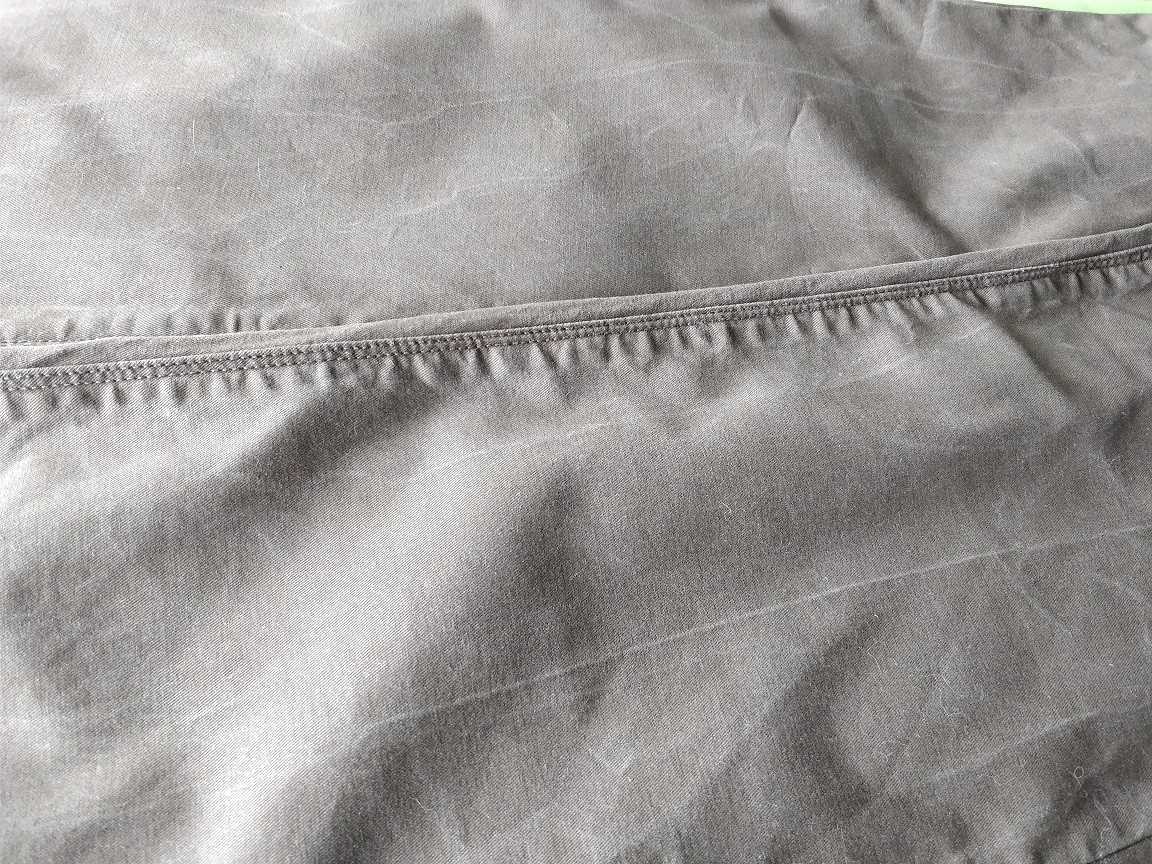
If you are experiencing white streaks on your clothes after washing, there are several steps you can take to prevent and solve this issue. Here are some tips:
1. Separate your laundry

To avoid white streaks caused by detergent residue or fabric softener, separate your laundry into different loads based on the type of fabric. Washing similar fabrics together can prevent any potential residue from transferring onto other clothes.
2. Use the right amount of detergent
Using too much detergent can leave behind a residue that can cause white streaks. Be sure to follow the instructions on the detergent packaging and use the recommended amount for your load size.
3. Check for detergent buildup
Over time, detergent can build up in your washing machine, leading to white streaks on your clothes. Regularly clean your washing machine by running a cycle with hot water and vinegar to remove any built-up residue.
4. Avoid mixing fabrics and detergents
Some fabrics, such as microfiber or delicate materials, can be more prone to white streaks. Avoid mixing these fabrics with other types of fabrics in the same load. Additionally, consider using a detergent specifically formulated for delicate fabrics to minimize the risk of white streaks.
5. Rinse your clothes properly
Make sure to rinse your clothes thoroughly to remove any leftover detergent. Residual detergent can leave behind white streaks on clothes when they dry. Consider using an extra rinse cycle or adding a fabric softener to help ensure proper rinsing.
6. Adjust your washing machine settings
If you consistently experience white streaks on your clothes, try adjusting your washing machine settings. Experiment with using less detergent, increasing the water level, or using a different washing cycle to see if it helps prevent the issue.
7. Clean the dispenser drawer
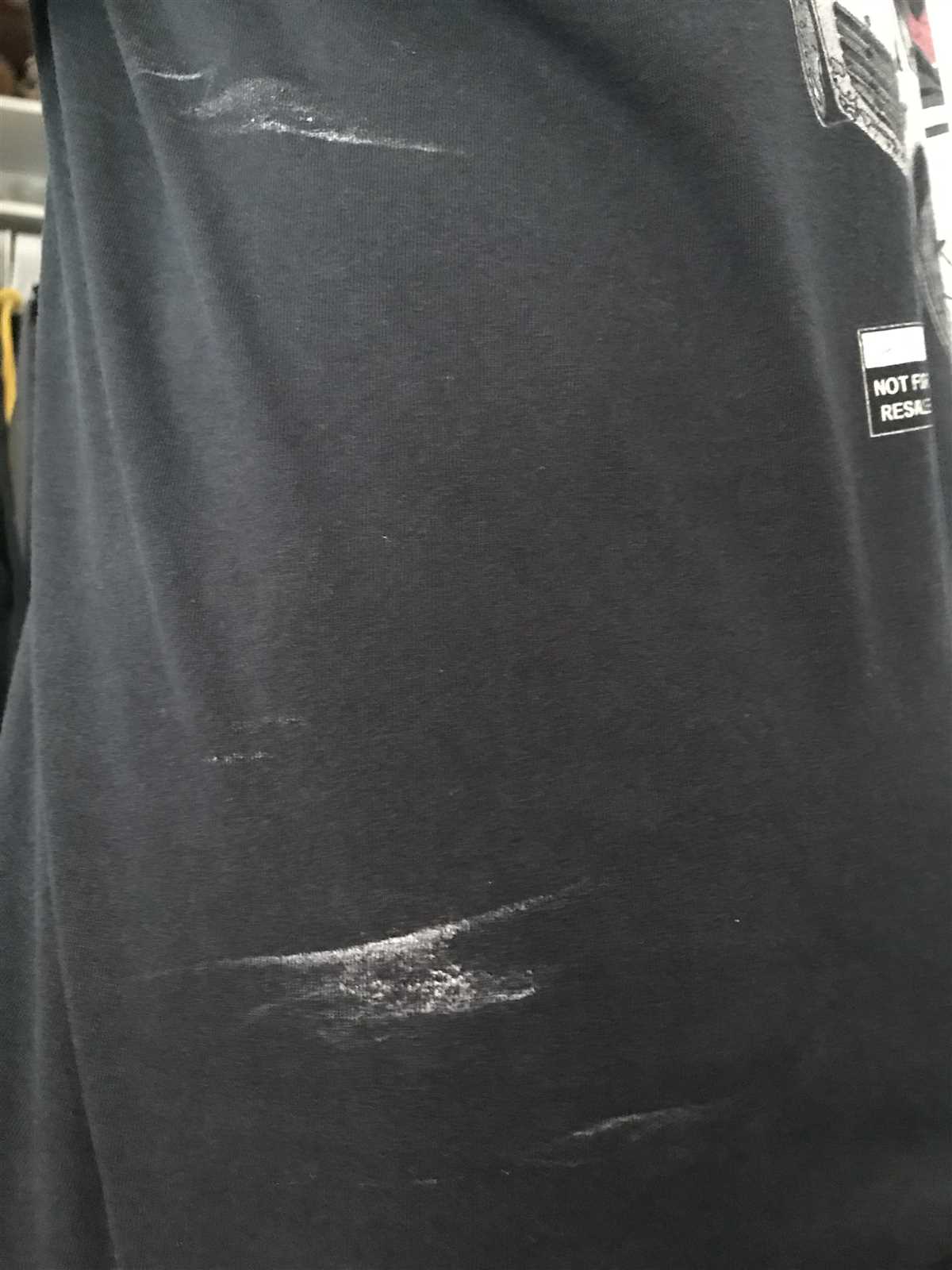
The dispenser drawer in your washing machine can accumulate detergent residue and fabric softener. Regularly remove and clean the dispenser drawer to prevent any buildup that could transfer onto your clothes during the wash cycle.
8. Try an alternative laundry method
If all else fails, consider trying an alternative laundry method, such as using natural laundry soap or detergent-free laundry balls. These alternative methods may help eliminate the risk of white streaks caused by detergent residue.
By following these prevention and solution tips, you can minimize the occurrence of white streaks on your clothes after washing, ensuring that your laundry comes out clean and fresh.
Choosing the Right Laundry Detergent
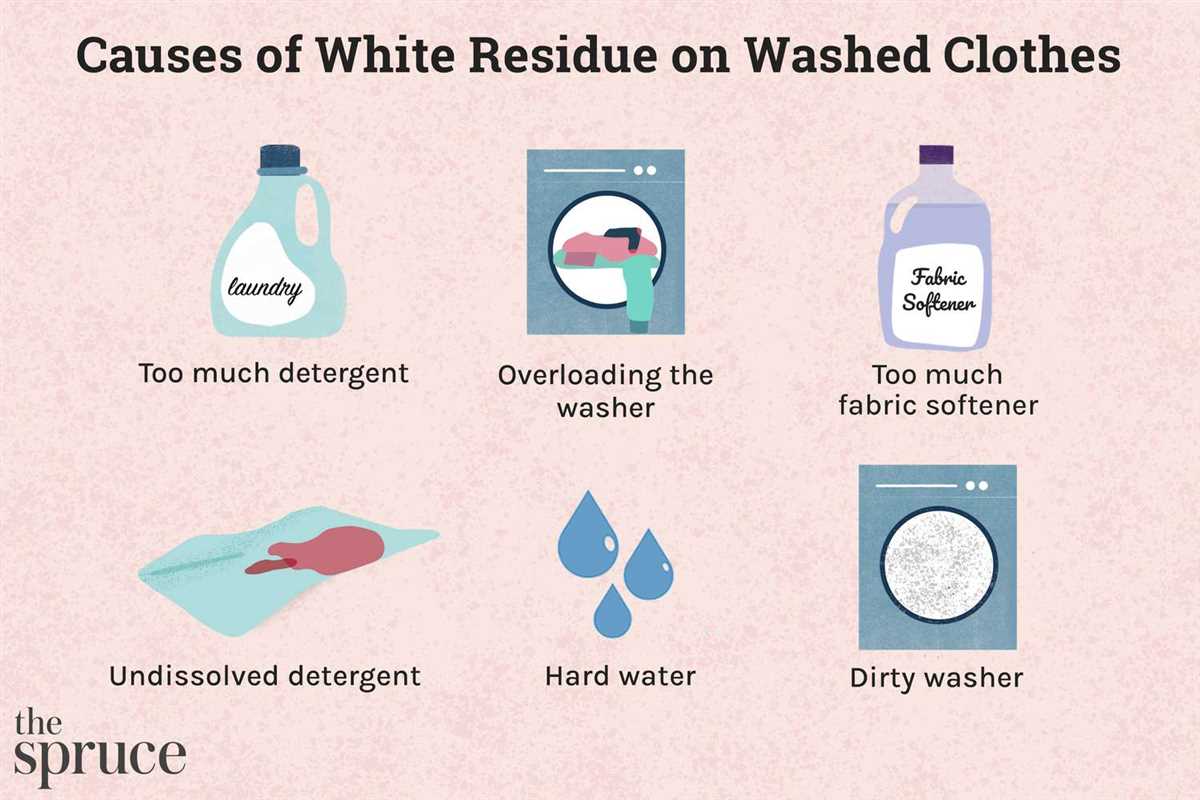
When it comes to preventing white streaks on your clothes after washing, choosing the right laundry detergent is essential. Here are some factors to consider when selecting the perfect detergent for your clothes:
Type of Detergent

- Pods/Capsules: These detergent forms are convenient and pre-measured, ensuring that you use the right amount of detergent every time.
- Liquid Detergents: Liquid detergents are versatile and work well with both top-loading and front-loading washing machines.
- Powder Detergents: Powder detergents are effective in removing stains and can be cost-effective for large loads of laundry.
Hypoallergenic Options
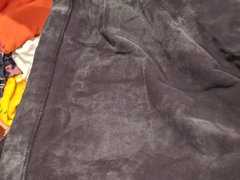
If you or your family members have sensitive skin or allergies, consider using a hypoallergenic detergent. These detergents are formulated to minimize the risk of skin irritation and are free from harsh chemicals and fragrances.
Fabric Compatibility
Pay attention to the labels on your clothes and choose a detergent that is suitable for the fabric type. Some detergents are specially designed for delicate fabrics, while others are more suitable for tough stains on heavy-duty fabrics.
Environmental Friendliness
If being eco-friendly is important to you, look for detergents that are labeled as environmentally friendly or biodegradable. These detergents are typically made from plant-based ingredients and are less harmful to the environment.
Stain-Fighting Power
If you frequently deal with tough stains, opt for a detergent that is known for its stain-fighting power. Look for detergents that mention stain removal on their packaging or have specific formulas for targeting different types of stains.
User Reviews and Recommendations
Before making a purchase, take the time to read user reviews and recommendations for different detergents. This can give you valuable insights into the effectiveness and performance of the product.
Cost and Value
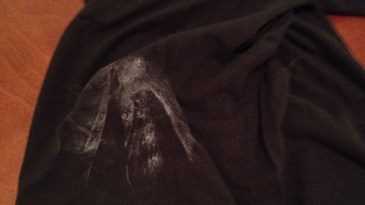
Consider your budget before selecting a detergent. While some detergents may be more expensive, they may also offer better cleaning performance and value for money. Look for detergents that provide a balance between cost and quality.
| Detergent Brand | Detergent Type | Hypoallergenic | Fabric Compatibility | Environmental Friendliness | Stain-Fighting Power |
|---|---|---|---|---|---|
| Tide | Pods, Liquid, Powder | No | Wide range of fabrics | No | Strong |
| All Free Clear | Pods, Liquid | Yes | Sensitive skin, gentle fabrics | Yes | Moderate |
| Gain | Pods, Liquid | No | Wide range of fabrics | No | Strong |
| Seventh Generation | Liquid | Yes | Wide range of fabrics | Yes | Moderate |
Remember, choosing the right laundry detergent is crucial in preventing white streaks on your clothes and ensuring clean and fresh laundry every time. Consider your needs and preferences, and let the detergent do the hard work for you.
Additional Tips for Keeping Clothes Streak-Free
- Separate clothing items: To prevent white streaks on clothes, it’s important to separate your laundry by color and fabric type. Washing white clothes separately from dark or colored clothes can help avoid any transfers of dirt or dyes that may cause streaks.
- Pre-treat stains: Stains on clothes can also contribute to white streaks after washing. Before putting your clothes in the washing machine, pre-treat any visible stains with stain remover or detergent to ensure they are properly dissolved and removed during the wash cycle.
- Use the right amount of detergent: Using too much detergent can leave residue on clothes, which can lead to streaks. Follow the recommended dosage on the detergent packaging and adjust it based on the size of your load and the level of dirtiness to ensure proper cleaning without any excess detergent residue.
- Choose the correct water temperature: Different fabrics require different water temperatures for optimal cleaning. Be sure to check the care labels on your clothes and adjust the water temperature accordingly. Using hot water when it’s not necessary can cause detergent buildup and contribute to streaks.
- Avoid overloading the washing machine: Overloading the washing machine can prevent clothes from getting properly agitated and cleaned. This can lead to insufficient rinsing and residue buildup, resulting in white streaks. Follow the recommended load capacity for your specific machine, and if in doubt, wash smaller loads to ensure thorough cleaning.
- Clean the washing machine regularly: Regularly cleaning your washing machine can help prevent the accumulation of dirt, detergent residue, and hard water deposits that can contribute to white streaks on clothes. Follow the manufacturer’s instructions to clean the machine or use specific washing machine cleaning products.
FAQ
What are the possible causes of white streaks on clothes after washing?
There are several possible causes of white streaks on clothes after washing. One common cause is the use of too much laundry detergent, which can leave behind a residue on the fabric. Another cause could be hard water, which contains minerals that can build up on clothing over time. Additionally, fabric softeners or dryer sheets can leave behind a waxy residue that causes white streaks. Finally, certain types of clothing materials, such as polyester or nylon, are more prone to developing white streaks.
How can I prevent white streaks on my clothes after washing?
There are a few steps you can take to prevent white streaks on your clothes after washing. First, make sure you are using the right amount of laundry detergent. Using too much can lead to residue buildup. If you have hard water, consider using a water softener or adding vinegar to the wash to help remove mineral deposits. Avoid using fabric softeners or dryer sheets, as they can leave behind a waxy residue. Finally, try to avoid overloading the washing machine, as overcrowding can prevent clothing from getting properly cleaned.
Are white streaks on clothes after washing permanent?
Whether or not white streaks on clothes after washing are permanent depends on the cause. If the streaks are due to a buildup of laundry detergent or fabric softener, they can often be removed by rewashing the clothing without using those products. However, if the streaks are caused by hard water or a reaction with certain clothing materials, they may be more difficult to remove. In some cases, the white streaks may become permanent if they have set into the fabric.
Can using a different laundry detergent help prevent white streaks on clothes?
Yes, using a different laundry detergent can help prevent white streaks on clothes. If you are experiencing white streaks after washing, try switching to a detergent that is specifically designed for hard water or that is free of dyes and fragrances. These types of detergents are less likely to leave a residue on the fabric. It may take some experimentation to find the right detergent for your specific needs, but switching brands or formulas can often make a noticeable difference.
Is it possible to remove white streaks from clothes without rewashing them?
Yes, it is possible to remove white streaks from clothes without rewashing them. One method is to soak the affected clothing in a mixture of water and vinegar or lemon juice, which can help dissolve any residue causing the streaks. Another option is to use a stain remover or laundry pre-treatment on the affected areas before washing the clothing again. Brushing the fabric with a soft-bristled brush can also help to lift and remove any residue. It’s important to follow the care instructions on the clothing label and to test any cleaning method on a small, inconspicuous area first.
Why do I get white streaks on my clothes after washing?
White streaks on clothes after washing can be caused by a few different factors. One common cause is using too much detergent. When too much detergent is used, it can leave a residue on clothing that appears as white streaks. Another possible cause is using a low-quality detergent that does not dissolve properly in water. This can also lead to residue on clothing. Additionally, hard water can contribute to the problem, as it can prevent detergent from rinsing out completely. Finally, using a washing machine that is dirty or in need of maintenance can cause white streaks on clothes.














